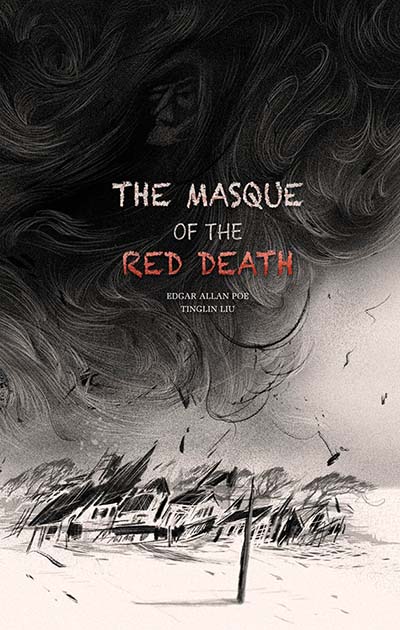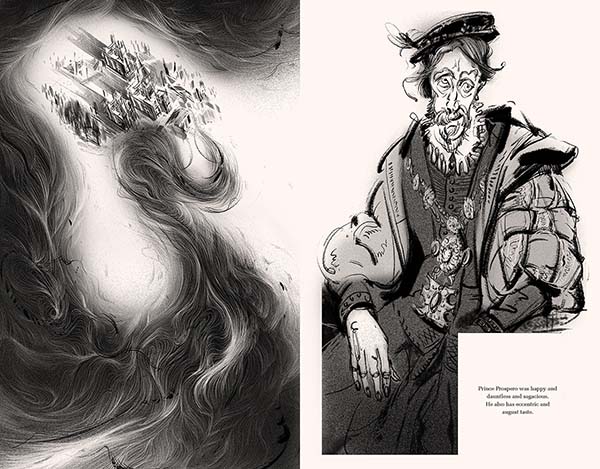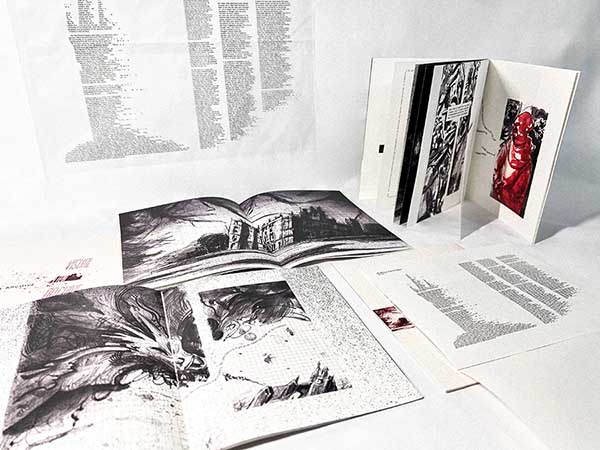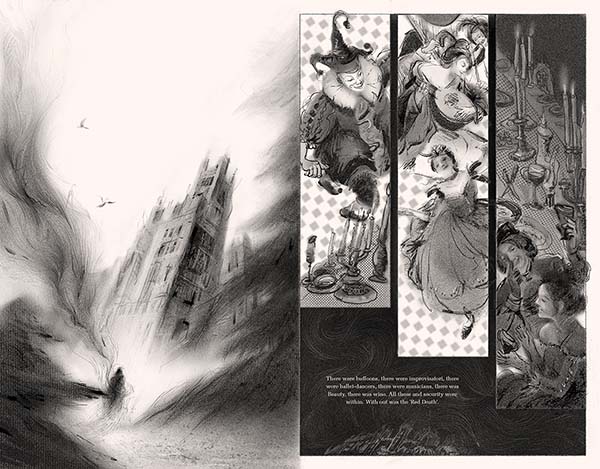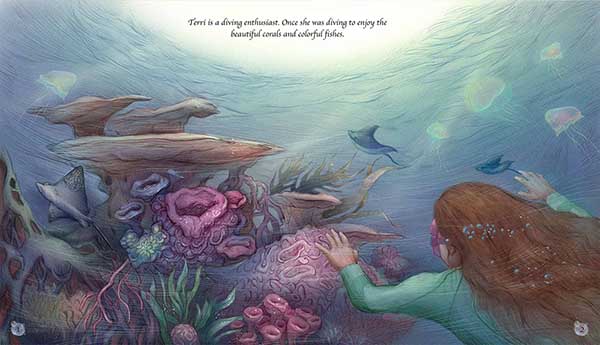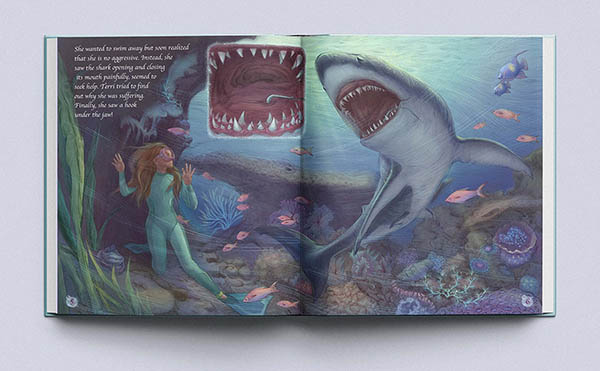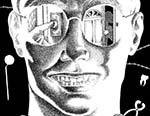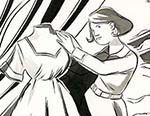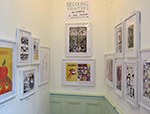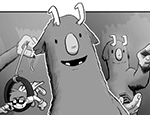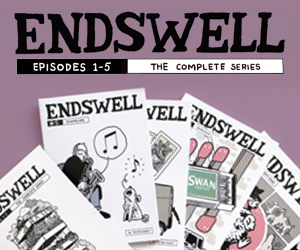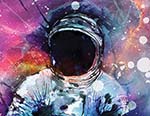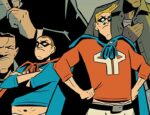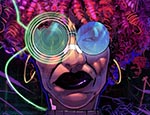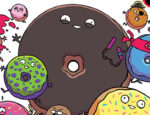10 YEARS OF THE BF SIX TO WATCH! In the fourth of our 2024 Broken Frontier ‘Six to Watch’ interviews we chat today with Chinese artist Tinglin Liu about her breathtakingly atmospheric adaptation of Edgar Allan Poe’s The Masque of the Red Death (reviewed here earlier this year at BF). Tinglin talks about her approach to adaptation, the mediums she works in, and the perils of perfectionism in comics creation…
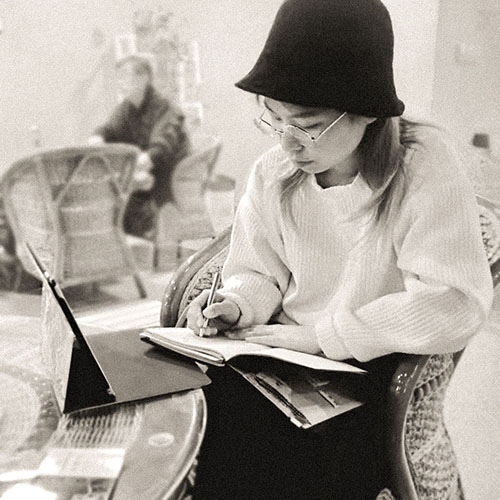
ANDY OLIVER: Our standard opening question for this year’s ‘Six to Watch’ artists, Tinglin, as we look to bring your work to a wider readership. Let’s begin by asking you to tell us about your wider artistic practice and endeavours, and your background in the arts?
TINGLIN LIU: In September 2022, driven by a mix of curiosity and anticipation for the future, I embarked on a journey from Beijing to London to pursue an MA in Illustration at Kingston University. During my studies, I discovered a deep passion for visual storytelling. I immersed myself in a wide array of comics and graphic novels, and frequently visited numerous comic book stores across London. In those spaces, I found the vibrancy and limitless possibilities of comic art, as if a door to a new world had been opened. My encounter with Broken Frontier further solidified my love for comic creation, making me realize that comics are not just a medium of expression but a world full of thrilling possibilities.
AO: What is it about comics as a form that appeals to you in your storytelling? When did you first discover the medium?
LIU: What draws me to comics is their poetic and imaginative quality. This poetic aspect is not only reflected in the visual style but also the mastery of narrative structure and pacing. My first real encounter with comics was a few years ago at an art fair, where I met a fellow comic enthusiast who introduced me to The Eyes of the Cat by Moebius and Jodorowsky. The work left a profound impression on me, with its powerful visual language and cinematic narrative rhythm. This was the moment I truly appreciated the unique allure of comics and graphic novels. Comics captivate me because they allow for a light-hearted yet clever approach to reimagining and reassessing my relationship with the world around me.
AO: We reviewed your first long-form comics work, an adaptation of Edgar Allan Poe’s The Masque of the Red Death, at Broken Frontier earlier this year calling it “a phenomenal convergence of textual soundbites and visual reimagining to make something that is both faithful to the original and yet also expands on its themes in its translation to another medium.” What inspired you to bring this particular story to the comics page?
LIU: I sincerely appreciate the positive and kind feedback from you and the Broken Frontier team on this project! Adapting Edgar Allan Poe’s The Masque of the Red Death into a graphic novel was a challenging endeavour. I didn’t strictly adhere to the traditional framework of comic creation but instead crafted the work based on my interpretation of the story and the subtle nuances of the text. I employed an immersive creative approach, much like an actor who repeatedly delves into a script. I would continuously visualize the story in my mind, experiencing the tension of the pacing and the suspenseful narrative.
In terms of inspiration, I believe it’s the result of continuous learning and accumulation. London’s rich theatrical and historical elements have greatly influenced me, especially when experiencing musicals in the city’s grand theatres. The exquisite costumes, stage designs, and musical atmosphere have all enchanted me. These “visual archives” have significantly contributed to my later visual creations, serving as vital sources of inspiration.
AO: What were the practical considerations of adapting The Masque of the Red Death to comics? How did you approach that in terms of visually interpreting the text, building the tension, and communicating the brooding atmosphere of the story? What for you could the tools of comics storytelling specifically bring to the adaptation?
LIU: When adapting The Masque of the Red Death, I focused on the historical context of the story and Poe’s creative intent. The novella itself is almost like a silent film, with no dialogue, yet its textual power carries immense visual tension, layering the suspense. To convey this in the graphic novel, I employed a split-page layout in the first half of the book. For example, on pages 11/12 and 15/16, the left page emphasizes the silent infiltration of the Red Death, while the right page depicts the prince and courtiers indulging in their revelry. This contrast between stillness and movement, interior and exterior, coupled with the relentless passage of time, amplifies the story’s irony and suspenseful atmosphere.
Moreover, considering the story’s setting during a plague, I used a black-and-white palette to reflect the historical oppression, despair, and chaos. The monochromatic approach not only highlights the dark atmosphere of the era but also allows readers to focus more on the narrative power of the images, deepening their engagement with Poe’s unique storytelling. I believe that the simplicity of black and white can deliver a powerful visual impact, where the absence of colour distractions enhances the narrative strength.
As a newcomer, I’ve found that comic storytelling offers many possibilities for adaptation. Visual storytelling creates a stronger immersion and can simplify complex information in new and enriching ways. Particularly in page layout design, comics allow for flexible transitions in time and space, adding layers of complexity and depth to the story.
AO: Looking at the work on your website I was particularly taken by your use of colour in Shark Lady. Tell us a little about some of your other graphic narrative projects.
LIU: Thank you for your kind words! Shark Lady is another project, this time a picture book adapted from an online documentary. What intrigued me most about the documentary was how it challenged my preconceived notions about sharks. After watching the short video multiple times, I was deeply moved by the courage of humans and the inherent spirituality of nature. Out of reverence for nature, I decided to recreate this captivating segment into a picture book using visual storytelling, aiming to capture both the thrilling and heartwarming aspects of the story.
In terms of colour, I used cool, muted tones of blue and purple in Shark Lady to convey a sense of loneliness and alienation, particularly during Terri’s first encounter with the shark, when she felt fear and uncertainty. These tones emphasize the ocean’s coldness and depth, allowing readers to feel Terri’s smallness and helplessness in the vast sea as she faces this massive creature. The sombre palette not only enhances the story’s tension but also deepens the reader’s understanding of the character’s inner loneliness and anxiety.
AO: Are there any other adaptation projects in the works from you? Do you have any plans for original graphic novel or comics stories?
LIU: Currently, I am dedicating time to a new [Poe] project, The Black Cat, which I hope to share with everyone by the end of the year.
AO: Can you give us some insight into your creative process? What mediums do you work in?
LIU: I consider myself quite meticulous, so my creative process often involves repeatedly refining even the most seemingly insignificant details. Perhaps I’m something of a “detail freak”, always trying to add layers to my work during creation, though this isn’t always beneficial and can sometimes lead to unnecessary complications. However, if readers notice and appreciate these “little touches”, it brings me great joy.
I primarily work with a combination of digital and traditional techniques, such as blending ink painting with digital art or employing the principles of Riso printing for layered effects. Typically, I start by experimenting on traditional media to get a feel for the project, creating a “visual archive” before moving on to digital painting for the final touches.
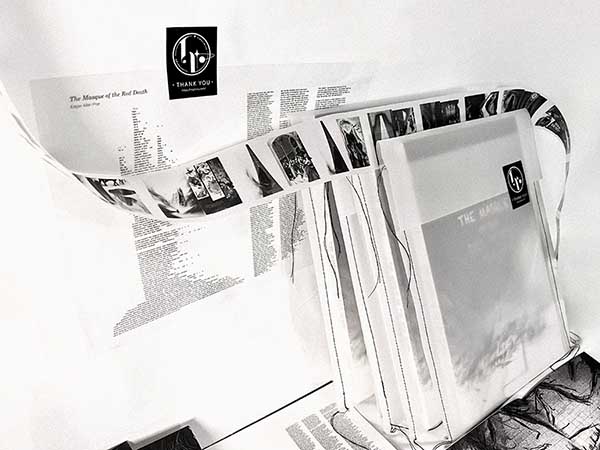
AO: Where can readers see you at comics events through the rest of 2024?
LIU: This year, I’ve applied to participate in two of the industry’s top comic festivals, Thought Bubble and LICAF. If all goes well, I’ll be there to meet everyone! These events are not only fantastic opportunities for me to interact with accomplished peers, publishers, and readers but also a crucial platform for self-discovery.
Visit Tinglin Liu’s website here
Interview by Andy Oliver
2024 marks the tenth year of Broken Frontier’s ‘Six to Watch‘ initiative. Look for articles throughout the year celebrating the work of those artists who have been a part of the programme.





